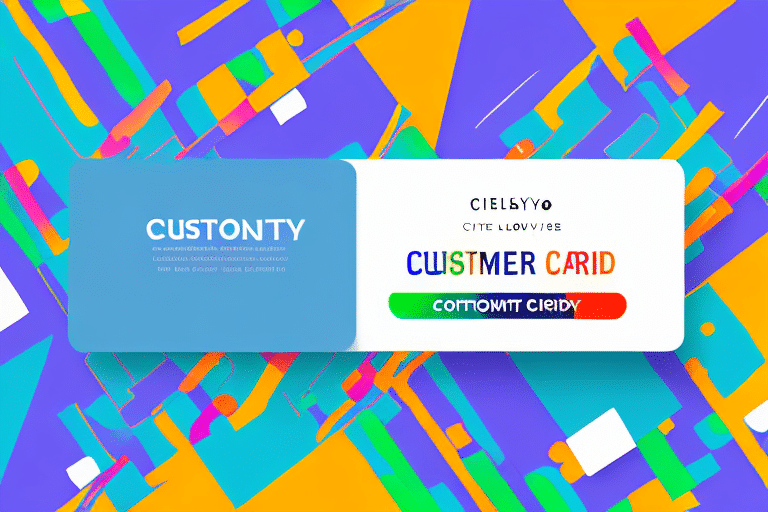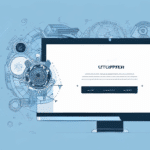Crafting an Effective Customer Retention Letter
In today's competitive business world, customer retention is more important than ever. Studies show that increasing customer retention rates by just 5% can lead to an increase in profits of 25% to 95% Bain & Company. It's not enough to just acquire new customers; you also need to keep them coming back. That's where a well-crafted customer retention letter comes in. In this article, we'll explore why customer retention matters and provide tips for writing a compelling retention letter that will keep your customers loyal and returning for more.
Why Customer Retention Matters for Your Business
Customer retention is essential for the long-term success of a business. It's more cost-effective to retain an existing customer than it is to acquire a new one. In fact, acquiring a new customer can cost five times more than retaining an existing one Harvard Business Review. A loyal customer not only generates repeat business but also acts as a referral source, bringing in new customers to your business. Additionally, loyal customers are more likely to spend more money on your products or services over time.
Moreover, customer retention helps to build a strong brand reputation. When customers are satisfied with your products or services, they are more likely to leave positive reviews and recommend your business to others. This positive word-of-mouth marketing can significantly increase your customer base and revenue. According to a Nielsen report, 92% of consumers trust recommendations from friends and family over any other type of advertising.
Furthermore, customer retention allows businesses to gather valuable feedback from their customers. By maintaining a relationship with your customers, you can gain insights into their needs and preferences, which can help you improve your products or services. This feedback can also help you identify areas where your business needs to improve, allowing you to make necessary changes to better serve your customers. Tools like SurveyMonkey and Qualtrics provide platforms to effectively gather and analyze customer feedback.
Understanding Your Customers' Needs and Expectations
Before you start writing your retention letter, it's important to have a deep understanding of your customers' needs and expectations. Take time to gather data on their buying habits, preferences, and pain points. This will help you craft a message that resonates with them and demonstrates that you understand their needs and are committed to meeting them.
One effective way to gather data on your customers is through surveys. You can send out surveys via email or social media to gather feedback on their experiences with your product or service. This feedback can provide valuable insights into what your customers value most and what areas need improvement. Additionally, you can analyze customer reviews and comments on your website or social media pages to gain further understanding of their needs and expectations. According to SurveyMonkey, companies that actively listen to customer feedback see up to a 10% increase in customer retention rates.
Identifying Key Customer Segments for Targeted Messaging
Not all customers are the same, so it's important to segment them based on factors such as buying history, demographics, or behavior. This will help you tailor your messaging to appeal to each segment's specific needs and interests. For example, customers who have previously made large purchases may respond better to targeted promotions or discounts compared to customers who consistently make smaller purchases.
Another important factor to consider when identifying key customer segments is their geographic location. Customers in different regions or countries may have different cultural or social norms, which can impact their buying behavior and preferences. By understanding these differences, you can create messaging that resonates with each segment and increases the likelihood of conversion. Tools like HubSpot's segmentation software can assist in effectively identifying and managing customer segments.
Tips for Writing a Compelling Customer Retention Letter
When writing your retention letter, it's important to keep it concise, clear, and engaging. Start with a strong opening that immediately grabs your customer's attention and encourages them to keep reading. Use persuasive language to explain the value of your products or services and how they can help solve the customer's problems. Make sure to include a clear call-to-action that encourages the customer to take the desired action, such as making a purchase or contacting your customer support.
Another important aspect to consider when writing a customer retention letter is personalization. Address the customer by their name and reference their previous interactions with your company. This shows that you value their business and have taken the time to understand their needs. Additionally, consider offering a special promotion or discount to incentivize the customer to continue doing business with you. For example, personalized discounts can increase response rates by up to 50% Campaign Monitor.
Finally, proofread your letter carefully to ensure that it is free of errors and conveys a professional tone. Tools like Grammarly can help in identifying and correcting grammatical mistakes, ensuring your message is clear and professional.
Personalizing Your Retention Letter with Relevant Details
One of the most effective ways to make your retention letter stand out is by personalizing it with relevant details. Use the customer's name and mention their past purchases, interests, or preferences to make them feel valued and appreciated. This shows that you're not just sending a generic message, but that you're invested in the relationship and want to provide a personalized experience.
Additionally, you can include information about any upcoming promotions or events that may be of interest to the customer. This not only shows that you are aware of their interests, but also provides them with valuable information that they may not have otherwise known about. By including these relevant details, you can increase the chances of retaining the customer and fostering a long-term relationship.
Highlighting the Value of Your Products or Services
Make sure to clearly articulate the value of your products or services in your retention letter. Explain how they can help the customer solve a problem or achieve a goal. Use testimonials from satisfied customers to provide social proof and reinforce the benefits of working with your business. According to Inc.com, testimonials can increase conversion rates by up to 34%.
Another effective way to highlight the value of your products or services is by offering a free trial or demo. This allows potential customers to experience the benefits firsthand and can increase their likelihood of making a purchase. Additionally, consider offering a satisfaction guarantee or refund policy to further reassure customers of the value of your offerings.
It's also important to regularly communicate with your customers and keep them updated on any new features or improvements to your products or services. This shows that you are committed to providing the best possible experience for them and can help to build trust and loyalty. Consider sending out newsletters or hosting webinars to keep your customers informed and engaged. According to Marketo, regular communication can improve customer retention rates by up to 5%.
Offering Incentives to Encourage Repeat Business
One way to encourage repeat business is by offering incentives such as discounts or rewards. Make sure to highlight these incentives in your retention letter and explain how the customer can take advantage of them. This not only makes the customer feel appreciated but also incentivizes them to continue doing business with your company.
Another effective way to encourage repeat business is by providing exceptional customer service. When customers feel valued and heard, they are more likely to return to your business. Train your employees to be friendly, helpful, and responsive to customer needs. Consider implementing a customer loyalty program that rewards customers for their continued business. According to a Forbes article, loyalty programs can boost customer retention rates by up to 30%.
It's also important to regularly communicate with your customers and keep them informed about new products, services, or promotions. Send out newsletters or emails that provide valuable information and exclusive offers. This helps to keep your business top of mind and encourages customers to return for future purchases.
Using Emotional Appeal to Strengthen Customer Loyalty
Emotions play a significant role in driving customer loyalty. Use emotional appeal to connect with your customers and build a deeper relationship. Use words and phrases that evoke positive emotions such as happiness, excitement, or trust. Share stories or examples of how your products or services have made a positive impact on your customers' lives.
Another way to use emotional appeal is to show empathy towards your customers. Acknowledge their pain points and show that you understand their struggles. This can help build trust and create a sense of community between you and your customers. According to a study published in the Journal of Consumer Psychology, emotional connections with brands significantly increase customer loyalty.
It's important to note that emotional appeal should be used in moderation. While it can be effective in building customer loyalty, overusing it can come across as insincere or manipulative. Make sure to balance emotional appeal with factual information and clear communication about your products or services.
Measuring the Success of Your Customer Retention Strategy
In order to know if your retention strategy is working, it's important to measure your success. Set clear goals and track your progress over time. Use metrics such as customer lifetime value, repeat purchase rate, or customer satisfaction scores to evaluate the effectiveness of your retention letter. This will help you refine your strategy and make improvements as needed.
- Customer Lifetime Value (CLV): Predicts the total revenue a business can expect from a single customer account.
- Repeat Purchase Rate: Measures the percentage of customers who return to make another purchase.
- Customer Satisfaction Scores (CSAT): Gauges how satisfied customers are with your products or services.
Another important metric to consider is the churn rate, which measures the percentage of customers who stop using your product or service over a given period of time. A high churn rate can indicate that your retention strategy needs improvement, while a low churn rate suggests that your strategy is effective.
It's also important to gather feedback from your customers to understand their needs and preferences. Conduct surveys or focus groups to gather insights on what your customers value most about your product or service, and use this information to tailor your retention strategy accordingly. Tools like Tableau can help in visualizing and analyzing this data effectively.
Case Studies: Examples of Successful Customer Retention Letters
Take inspiration from successful customer retention letter examples. Look at how other companies in your industry have used retention letters to strengthen customer loyalty. Analyze what worked for them and how you can apply these strategies to your own business. Adapt or personalize these examples to fit your brand and messaging. For instance, Amazon effectively uses personalized recommendations in their retention communications to keep customers engaged and returning.
Common Mistakes to Avoid When Crafting a Retention Letter
There are several mistakes to avoid when crafting a retention letter:
- Making the letter too long and complicated: Keep your message clear and concise.
- Using overly technical or salesy language: Communicate in a friendly and approachable tone.
- Making false promises: Ensure all claims are honest and achievable.
- Neglecting proofreading: Always check for spelling or grammar errors.
- Ignoring formatting: Test your letter on different devices to ensure it displays correctly.
By avoiding these common pitfalls, you can create a more effective and professional retention letter that resonates with your customers.
Best Practices for Following Up with Customers After Sending a Retention Letter
Following up with customers after sending a retention letter is essential to maintain the relationship. Send a personalized thank-you email or phone call to acknowledge the customer's response to the letter. Use this opportunity to gather feedback and address any concerns the customer may have. Offer additional support or incentives to encourage continued business.
According to Forbes, timely and personalized follow-ups can significantly enhance customer satisfaction and loyalty.
Additionally, integrating automated follow-up systems using CRM tools like Salesforce or HubSpot CRM can ensure that no customer is overlooked and that all follow-ups are consistent and timely.
Integrating Your Customer Retention Letter into a Larger Marketing Campaign
A retention letter is just one part of a larger marketing campaign. Integrate your retention letter into an omnichannel marketing strategy that includes email, social media, and other channels. Keep track of which channels are most effective for reaching your target audience and adjust your strategy accordingly. According to Google Analytics, multichannel campaigns can improve customer engagement by up to 70%.
Using platforms like Mailchimp or Buffer can help in managing and analyzing the effectiveness of your integrated marketing efforts. Consistent messaging across all channels reinforces your brand and increases the likelihood of customer retention.
Conclusion: The Importance of Building Strong Relationships with Customers through Effective Communication
In conclusion, creating a customer retention letter is a powerful way to build strong relationships with your customers. By understanding their needs and expectations, personalizing your message, and offering incentives, you can keep them coming back for more. Use metrics to evaluate and refine your strategy over time, and integrate your retention letter into a larger omnichannel marketing campaign. Building a loyal customer base takes effort and attention, but with a well-crafted retention letter, it's more achievable than ever.






















